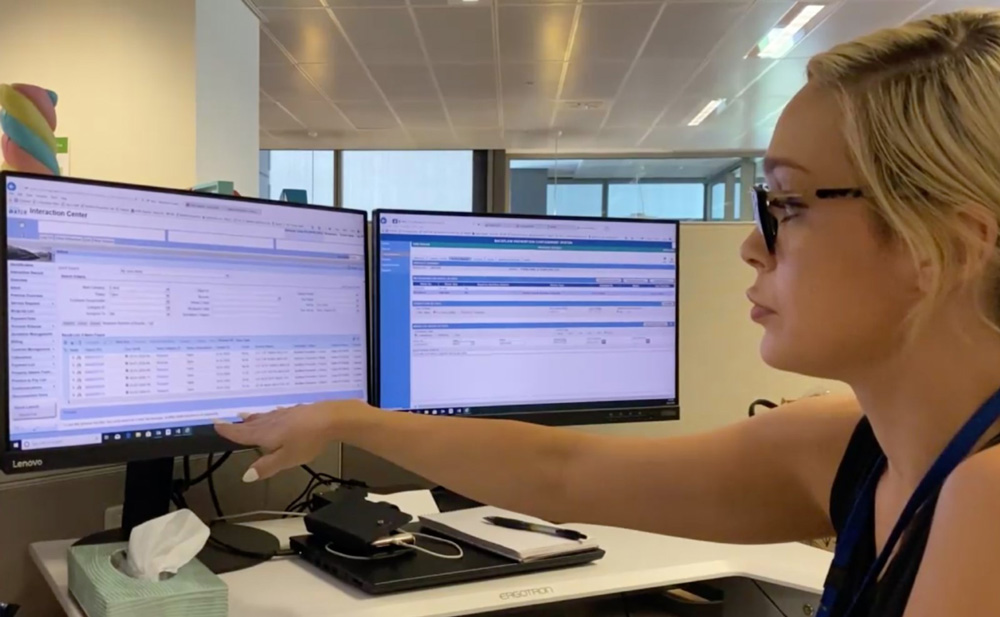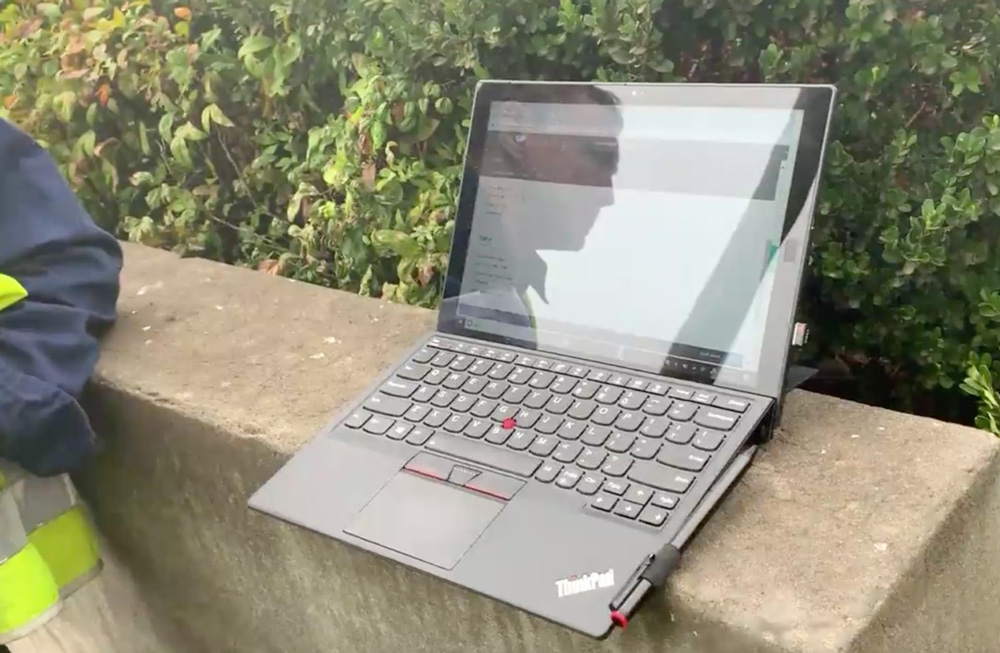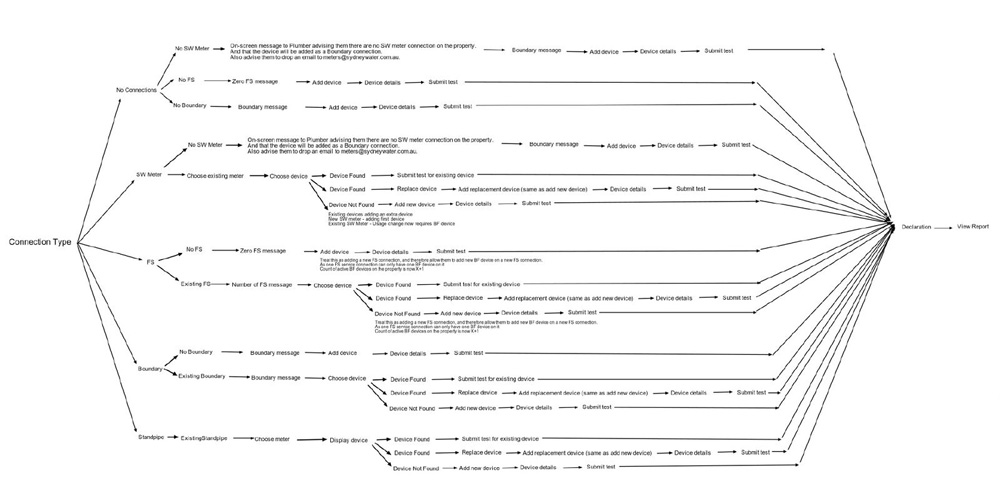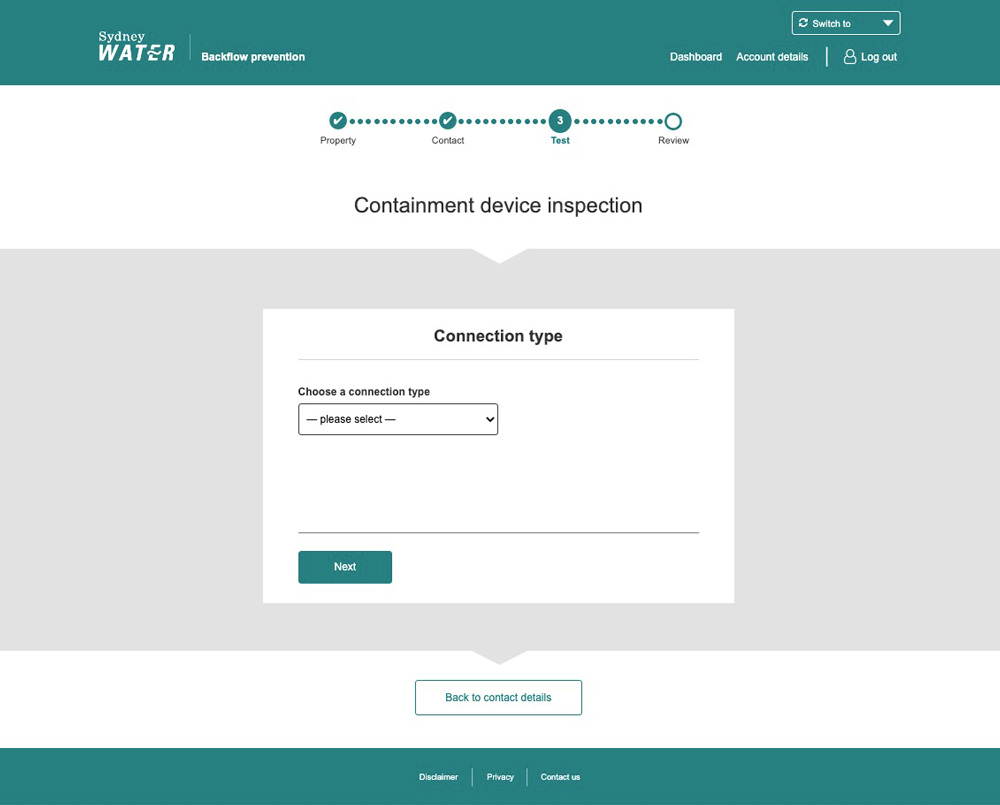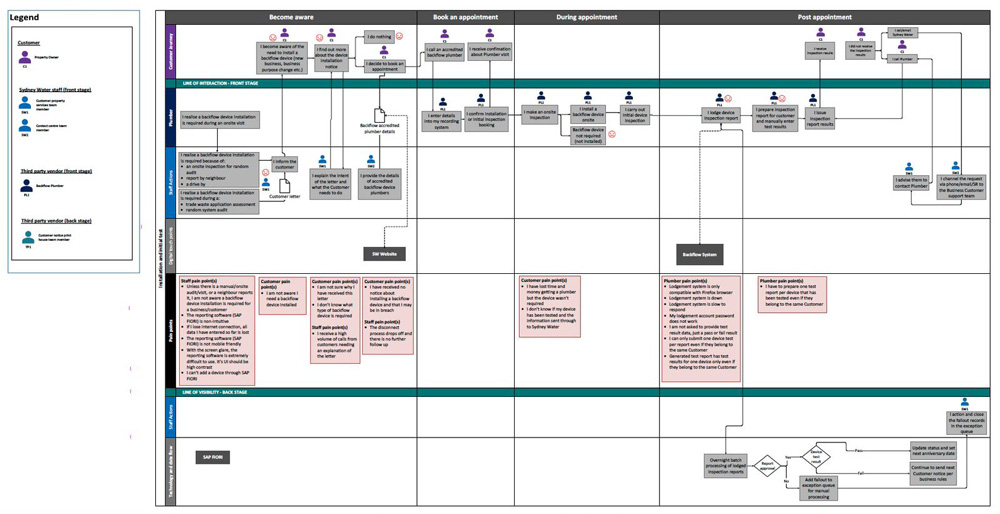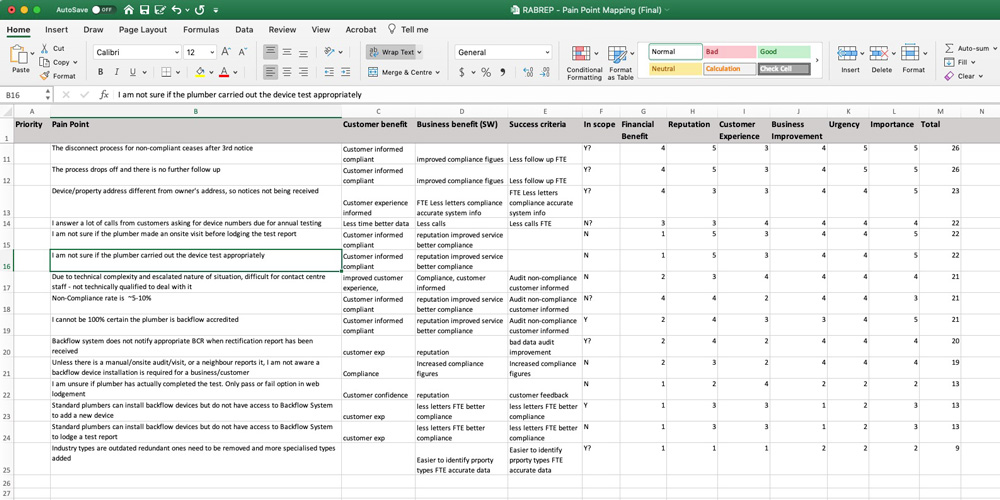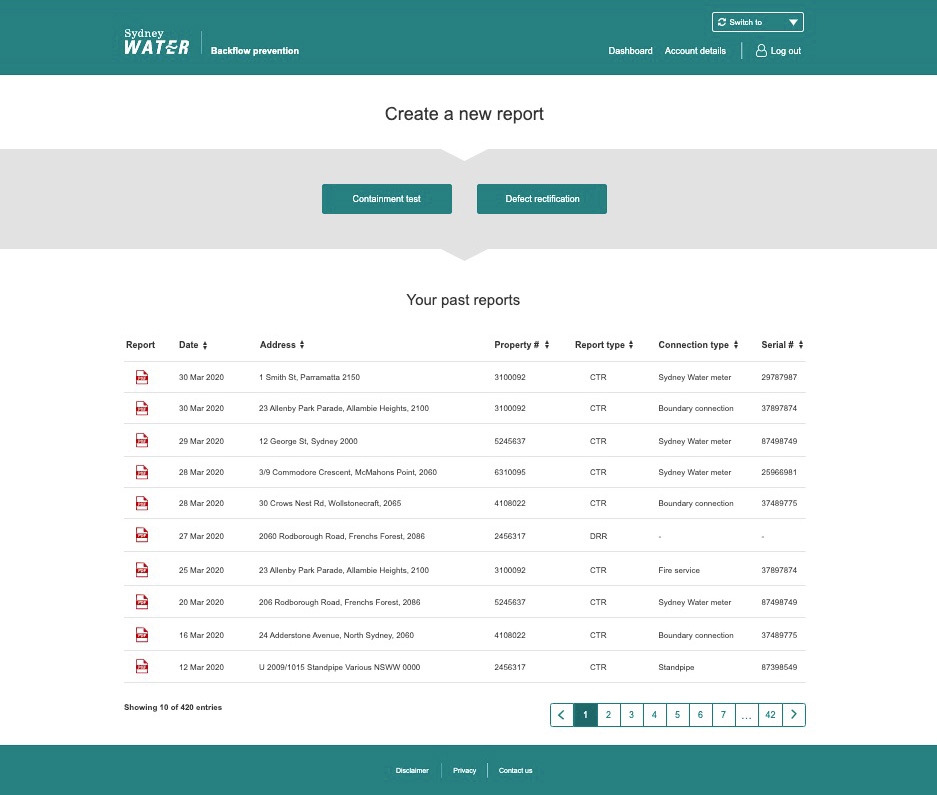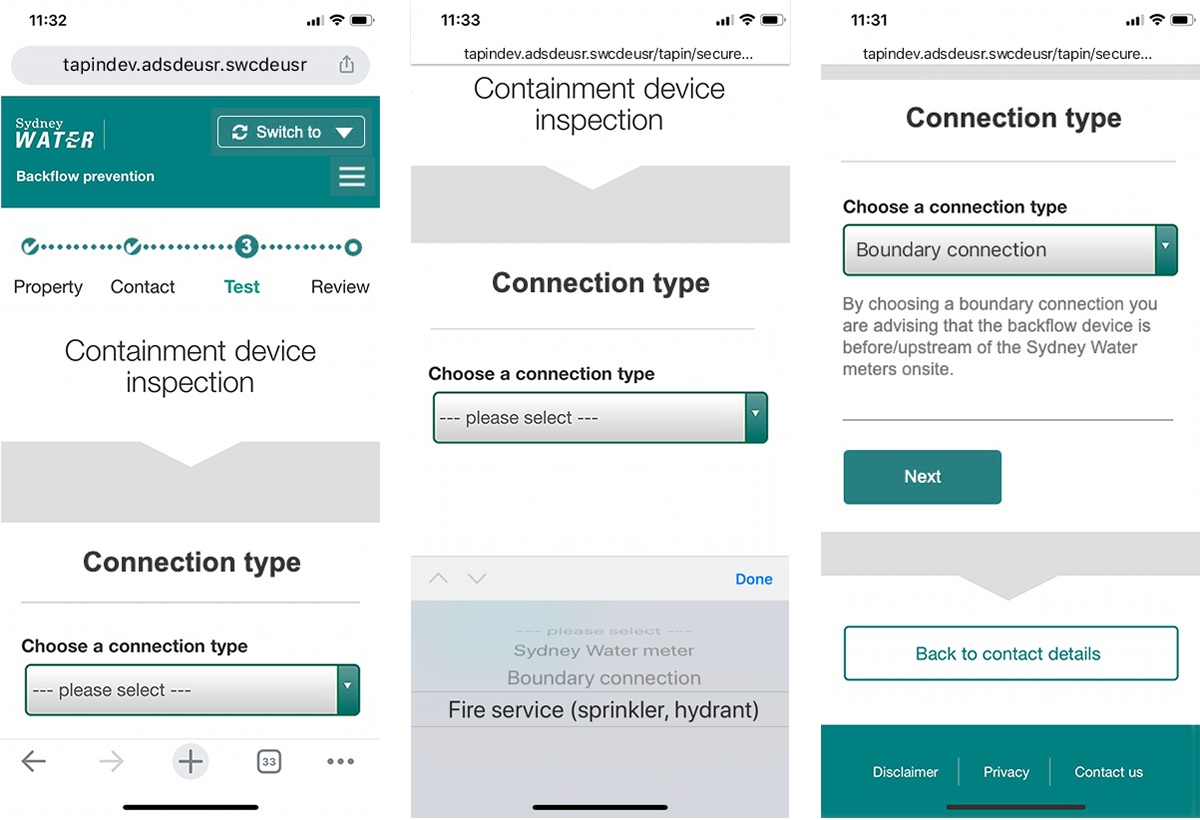The Company
Sydney Water is a New South Wales Government–owned statutory corporation that provides drinking water, wastewater and stormwater services to 5+ million people in Sydney, the Illawarra and the Blue Mountains regions.
Founded in 1882, they are the largest water management organisation in Australia, employing over 2,500 full-time and contract staff.
The Project
This project involved the replacement of two existing applications. Both applications included customer and staff portals:
1. Backflow Prevention
- Backflow prevention allows Sydney Water to eliminate the risk of drinking water contamination by dangerous pollutants produced by businesses.
- At risk Businesses must install a Backflow containment device that is tested annually by certified Backflow plumbers.
- The plumbers submit their test results to Sydney Water via the Backflow customer portal.
2. RAS (Retail Ancillary Services)
- RAS provided Property Link brokers with access to property documents such as Section 66, 88g, SSD, SLP, BAS, BOS, and SMR.
- It also provided NSW Office of Fair Trading users access to property information for vetting plumber applications.
My role
I was the UX lead for the project as part of a very large (20+), multi-disciplinary team. I was very fortunate to work alongside an extremely competent and experienced BA, and our collaboration, together with an adaptive and progressive dev team, was key to the successful outcome of the project.
The Problem
Both applications were extremely old and obviously suffered from response time and security issues. But other, more user-centric issues were revealed during the HCD research. These issues affected both users and business stakeholders.
- The usability of the Backflow app was so bad, users were frequently contacting the call centre for assistance, and repeatedly skipping a crucial part of the test lodgement process.
- The Backflow app was primarily needed for field work, but was not mobile friendly, and so presented serious usability issues for customers and audit staff.
- For RAS, one of the biggest problems was the lack of input validations that resulted in many Broker document requests failing and going into an exception queue.
The impact
The inaccurate information being entered into the Backflow system by external users had to be manually rectified by Sydney Water staff that, together with the handling of the call centre inquiries, were resulting in significant costs for the business unit.
RAS was seeing 70,000 exceptions annually requiring manual fixes involving 3 full-time Sydney Water staff, and equally time consuming work-arounds for the external users.
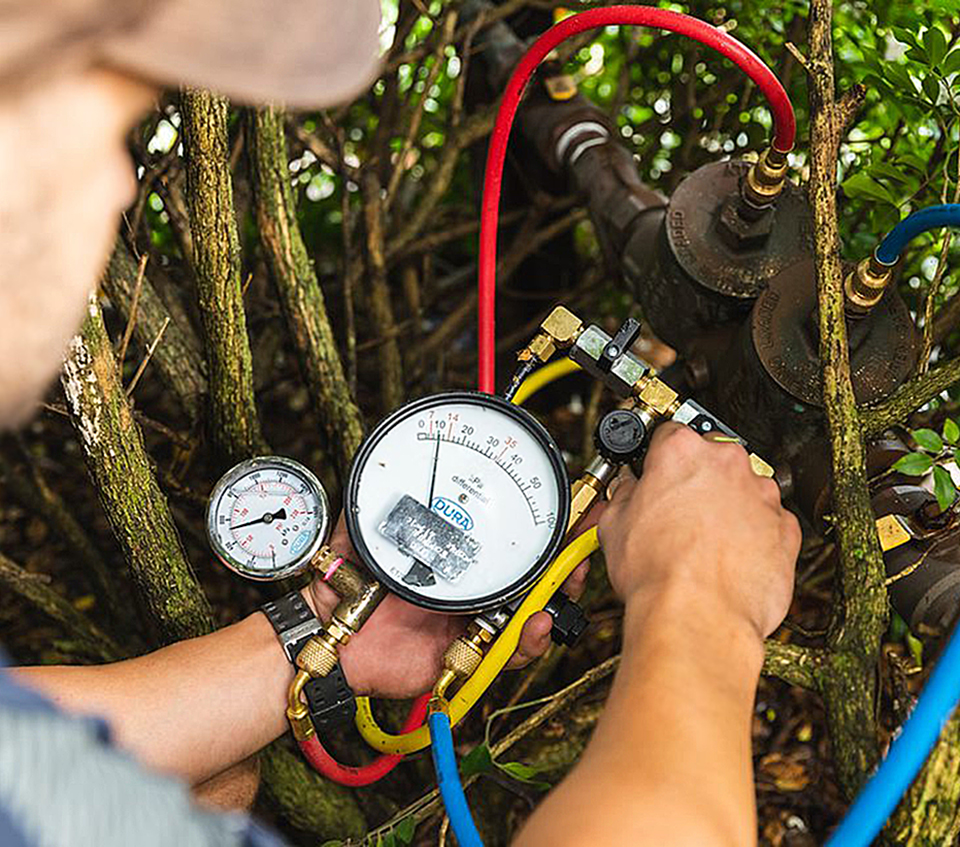 A Backflow prevention device being tested by a plumber
A Backflow prevention device being tested by a plumber
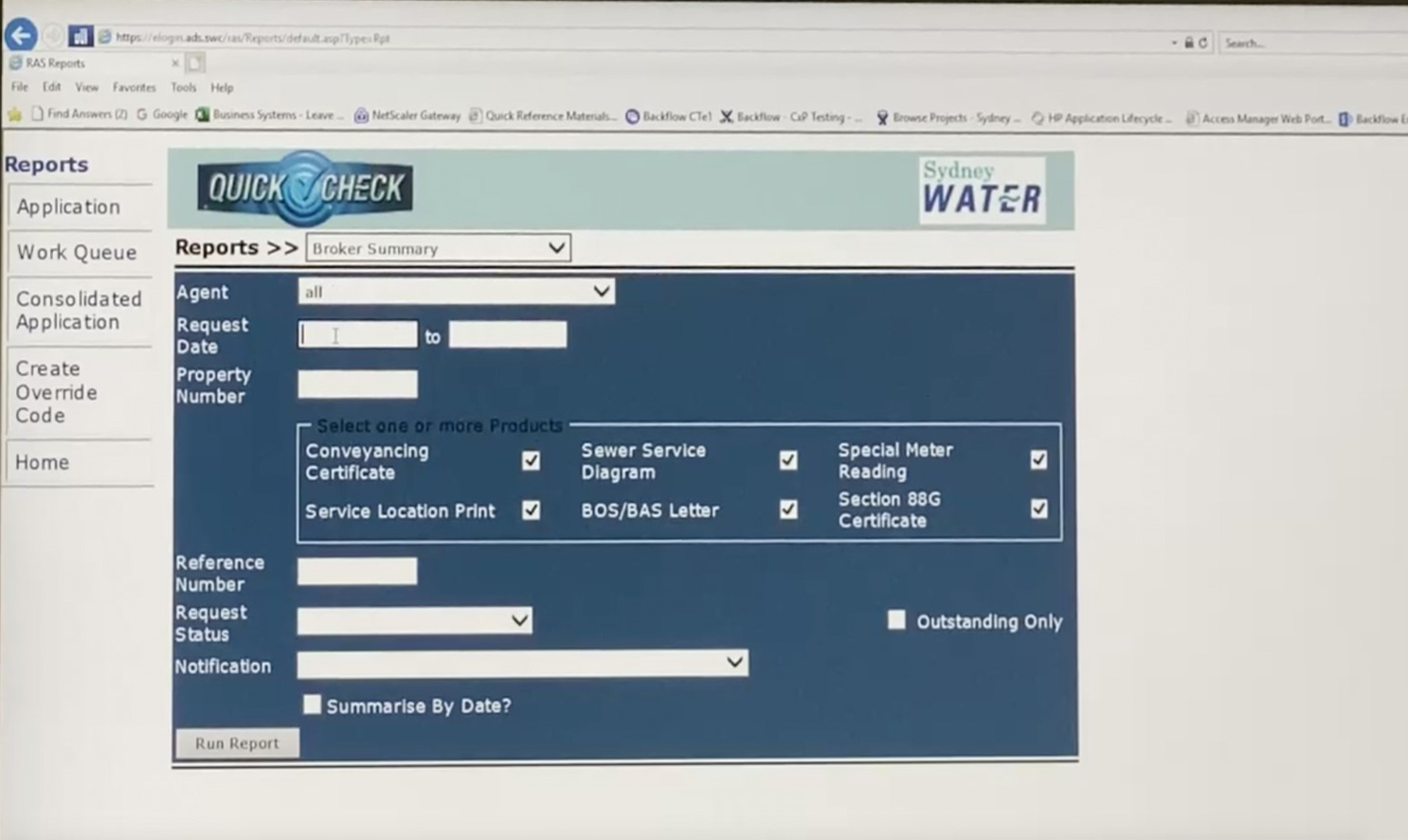 Quick Check app screen. Part of the old RAS system
Quick Check app screen. Part of the old RAS system
 Sample of document accessed by the property brokers
Sample of document accessed by the property brokers
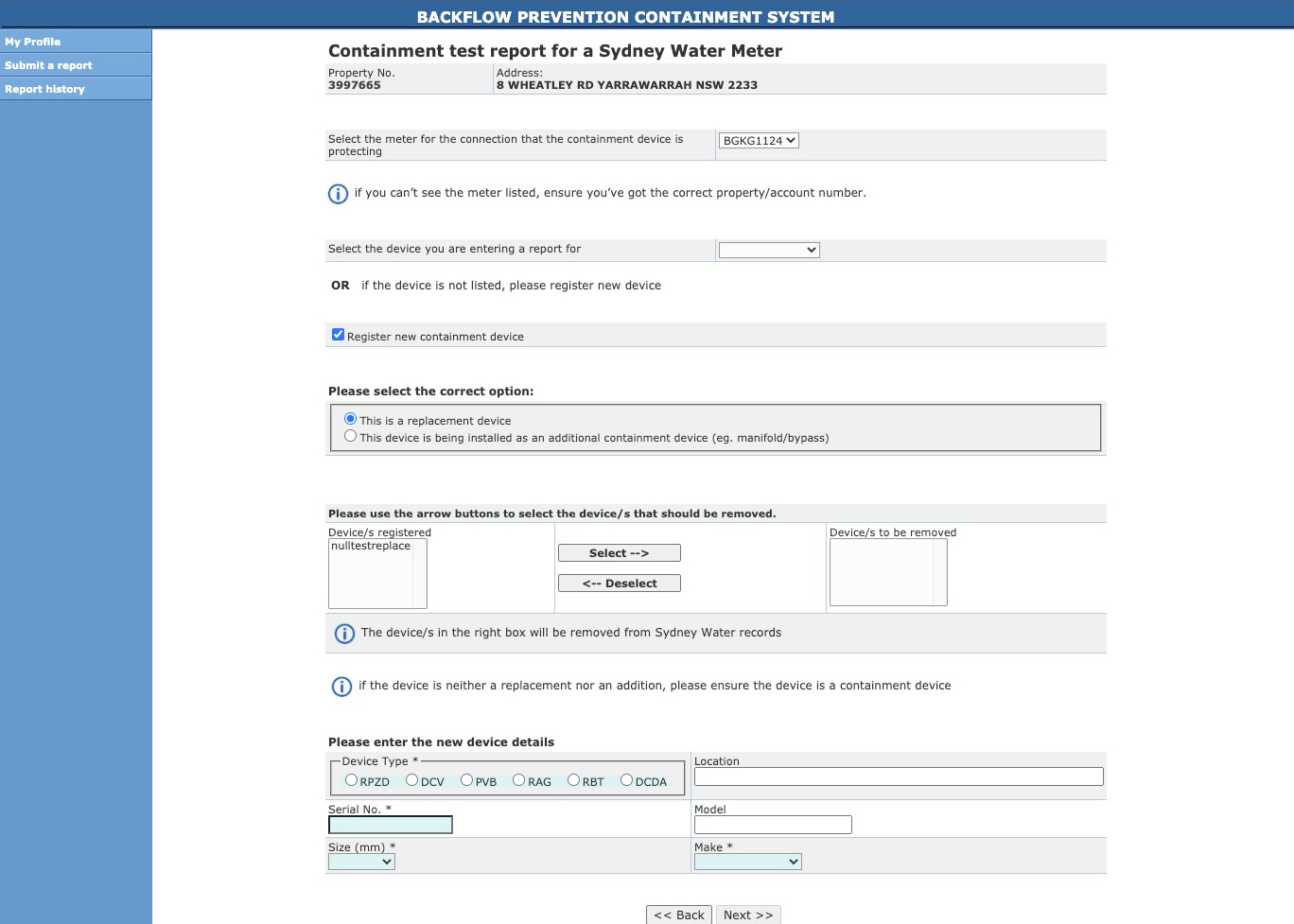 A particularly confusing part of the old Backflow app
A particularly confusing part of the old Backflow app
